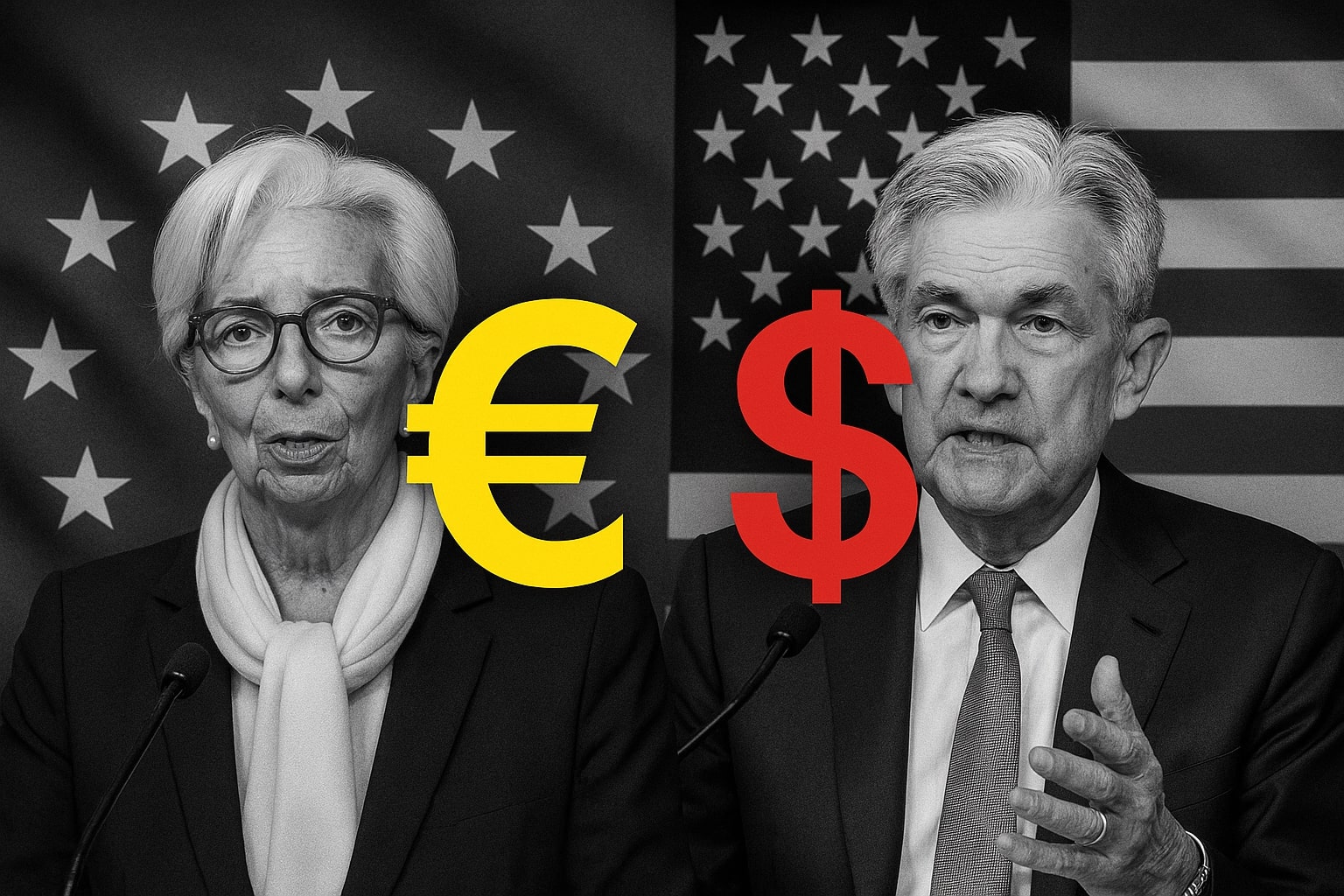
USD/JPY Price Forecast - Dollar to Yen Steadies Above 156 After Intervention Threats
Japan’s 3.0% inflation and ¥21.3 trillion stimulus soften yen gains as U.S. PMI resilience and Fed hawkish tone sustain USD/JPY’s bullish structure, eyeing a break toward 160.00 | That's TradingNEWS
USD/JPY (Dollar/Yen) Holds Above 156 as Intervention Fears and Diverging Policies Keep Traders on Edge
USD/JPY Stabilizes After Sharp Pullback From 157.89
The USD/JPY pair trades around 156.54, easing slightly after touching a near ten-month high of 157.89. The decline came as Japan’s Ministry of Finance issued fresh intervention warnings, pushing investors to trim long positions. Despite this brief correction, the pair remains firmly in an uptrend and is set for its second consecutive weekly gain. Tokyo’s verbal warnings were a clear signal that authorities are uncomfortable with the pace of yen depreciation, as the pair trades near levels that previously triggered direct government action.
While the Japanese Yen (JPY) gained modestly, the broader bias remains in favor of the U.S. Dollar (USD) due to yield differentials and strong U.S. macro data. The USD/JPY structure remains bullish as long as prices hold above 154.30 (21-day SMA) and 151.60 (50-day SMA). Any daily close above 158.00 would open the path toward 160.00, a level closely monitored by traders due to the risk of official intervention.
Policy Divergence Between BoJ and Fed Drives Persistent Dollar Strength
The Federal Reserve’s cautious tone contrasts sharply with the Bank of Japan (BoJ)’s ultra-loose stance. The latest U.S. Nonfarm Payrolls (NFP) report showed 119,000 jobs added in September, surpassing forecasts of 55,000. Although the unemployment rate rose slightly to 4.4%, the data reaffirmed the resilience of the U.S. labor market, prompting traders to reduce bets on a December rate cut.
In contrast, Japan’s Q3 GDP contracted amid weakening exports, dampening expectations for a near-term BoJ tightening. The BoJ continues to rely on yield curve control, while the U.S. 10-year Treasury yield remains near 4.45%, maintaining a wide policy gap. This divergence keeps capital flowing into dollar assets, sustaining demand for USD/JPY even as Japanese authorities voice discomfort with yen weakness.
BoJ Governor Kazuo Ueda acknowledged that the weak yen is fueling import-driven inflation, raising speculation that policymakers may debate an exit from negative rates in early 2026. However, Japan’s latest October CPI data — headline inflation at 3.0% YoY and core at 3.1% — has not been sufficient to trigger a decisive policy change. The government’s new ¥21.3 trillion stimulus package, including ¥17.7 trillion in spending and ¥2.7 trillion in tax cuts, underscores Tokyo’s preference for fiscal measures over monetary tightening, softening the yen’s short-term recovery potential.
Japan’s Trade Data Underscores Fragile Recovery
The latest trade data reinforced Japan’s economic fragility. Exports grew 3.6% YoY in October, slowing from 4.2% in September, with exports to the U.S. falling 3.1%, while shipments to China rose 2.1%. Imports advanced only 0.7% YoY, down sharply from 3.3%, highlighting weakening domestic demand and higher import costs from yen depreciation.
The weaker yen pushed up the price of imported goods, aggravating the strain on household budgets and pressuring the BoJ to strike a balance between supporting growth and curbing inflation. Although the government’s stimulus aims to counter these effects, rising import inflation keeps policymakers cautious about abrupt rate normalization.
U.S. PMI Data and Fed Commentary Bolster Dollar Support
In the U.S., the S&P Global Services PMI is projected at 54.6 for November, just below October’s 54.8, signaling ongoing expansion in the dominant service sector. The Federal Reserve remains focused on inflation persistence, with multiple FOMC members, including John Williams and Philip Jefferson, emphasizing the need for patience before cutting rates. These comments support a stronger dollar, keeping USD/JPY elevated despite intervention speculation.
The U.S. Dollar Index (DXY) remains above 106.40, sustaining upward momentum against major peers. Market participants anticipate that a stronger U.S. services sector and sticky inflation could push USD/JPY beyond 158.00, particularly if the BoJ maintains its dovish stance through year-end.
Technical Outlook: Bullish Trend Intact Despite Overbought Signals
From a technical perspective, USD/JPY has shown mild fatigue after the rally to 157.89, with momentum indicators hinting at consolidation. The Relative Strength Index (RSI) eased from 70 to 66, reflecting cooling momentum without signaling a reversal. The pair remains well above critical moving averages, maintaining a bullish formation.
Immediate resistance lies near 158.00, with further upside potential toward 160.00 if bullish momentum resumes. On the downside, initial support appears at 156.00, followed by 154.30, corresponding to the 21-day SMA. The long-term structure stays intact as long as the price remains above 153.00, the 200-day SMA.
Intervention Threats and Domestic Politics Shape Sentiment
The growing possibility of intervention from Japan’s Finance Ministry, led by Satsuki Katayama, is acting as a key psychological barrier for traders. The ministry reaffirmed readiness to respond to “excessive currency volatility,” which helped cap gains near the 158.00 zone. However, traders recall that previous interventions in 2022 only produced temporary yen recoveries, as fundamental policy gaps reasserted themselves.
Prime Minister Sanae Takaichi continues to support fiscal expansion, emphasizing domestic stimulus to offset external headwinds. The combination of expansive fiscal policy and a still-accommodative BoJ creates conditions for persistent yen weakness into early 2026, unless intervention becomes sustained and coordinated with U.S. policymakers.
Read More
-
Apple Stock Price Forecast - AAPL Shares Climbs to $270.87 After Record Quarter but Faces Growth Fatigue
21.11.2025 · TradingNEWS ArchiveStocks
-
XRP Price Forecast - XRP-USD Falls Below $2 After $400M Whale Sell-Off — XRP ETF Hype Turns to Capitulation
21.11.2025 · TradingNEWS ArchiveCrypto
-
Natural Gas Price (NG=F) Climbs to $4.62 as Winter Demand and Record LNG Exports Fuel Bullish Momentum
21.11.2025 · TradingNEWS ArchiveCommodities
-
Stock Market Today - Dow Climbs to 46,300 as NVDA, LLY, GAP, WMT Drive Market Rally
21.11.2025 · TradingNEWS ArchiveMarkets
-
EUR/USD Price Forecast - Euro to Dollar Drops to 1.1500 as U.S. PMI Surge and Fed Signals Hit Euro Momentum
21.11.2025 · TradingNEWS ArchiveForex
Market Positioning and Outlook
Speculative flows remain heavily tilted toward the dollar. CFTC data show net long USD positions against the yen rising 12% week-over-week, signaling traders expect continued appreciation unless BoJ rhetoric turns more hawkish. The USD/JPY has already climbed 4.2% in October, reflecting the market’s confidence in dollar strength relative to the yen’s structural weakness.
If USD/JPY holds above 156.00, a retest of 158.00–160.00 appears likely, driven by stronger U.S. PMI data and ongoing yield divergence. Conversely, a break below 154.00 would indicate intervention-driven selling pressure, possibly targeting 152.50 before renewed accumulation.
While the near-term volatility may persist due to intervention fears, the medium-term bias remains upward. As long as the BoJ delays rate hikes and the Federal Reserve maintains its restrictive policy stance, the USD/JPY pair will likely stay supported within a 155–160 range.
Verdict
The USD/JPY remains structurally bullish, supported by policy divergence, resilient U.S. data, and continued capital flows into dollar assets. Intervention risks may slow but not reverse the trend. The technical picture favors buyers above 155.00, with potential upside toward 159.50–160.00 before year-end. The current stance: short-term Buy, medium-term Hold, and long-term Buy, reflecting the dollar’s dominance and the yen’s vulnerability until the BoJ signals a definitive shift in policy.



















